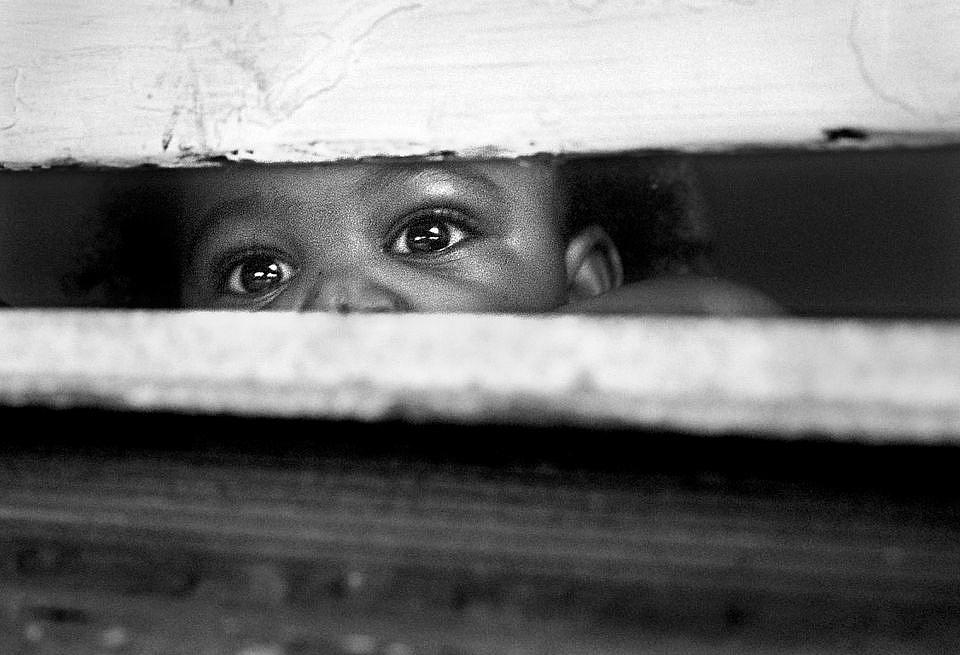Dear Cleveland: Six young women capture their city – the bad as well as the good – in photos
This story was produced as part of a larger project led by Rachel Dissell and Brie Zeltner, participants in the 2018 National Fellowship.
Other stories in this series include:
Healing through our reflections: Dear Cleveland
Dear Cleveland: Photos by Air Rodgers, 16
For Audrey, ‘wanna hang’ is a question with no good answer
’Achieve’ captures obstacles, aspirations of three young men growing up in Cleveland: Dear Cleveland

Lisa DeJong/The Plain Dealer
CLEVELAND, Ohio -- Images can be starting points for conversation. They also are a way to understand, challenge and examine the way we see the world.
As a part of The Plain Dealer’s Dear Cleveland project, which aims to share perspectives and daily challenges through the voices of young people in our city, we partnered with the Cleveland-based nonprofit Shooting Without Bullets to put cameras in the hands of six young women who volunteered this spring.
Plain Dealer photographer Lisa DeJong worked alongside the teens, who each received a small stipend, as they captured images and helped edit the work.
“Think of the project like your letter to Cleveland,” Shooting Without Bullets Creative Director Amanda King told the group the first day they met. The organization uses photography and other art forms to help black and brown youth in Cleveland add their voices to community conversations about complex social issues that affect their lives.
“You can write any kind of letter you want, but you’re doing it through images,” she said.
Below see photo galleries from each participant
The young women, ages 15 to 18, chose a theme that day: Utopia/Dystopia.
The idea developed as the participants talked about the stark differences they saw as they traversed their city.
The shiny buildings and institutions in University Circle on one side of a bridge and the pothole-pocked gritty streets of East Cleveland on the other.
But did that mean one was beautiful and one was ugly?
“Basically, we agreed that Cleveland deserved to be seen from both sides of the story: The good vs. the bad,” said Genesis Merritt, a 17-year-old student at John Hay Early College High School.
Lai Lai Bonner, 18, approached the theme as an exploration, using images as arguments to represent conflicted feelings about the city, feelings that sometimes are fluid. In essence: “This is why I love this. This is why I hate this. This is what it could be. This is what it should be, but this is how it really is,” said Bonner, a recent Cleveland School of the Arts graduate.
With that, and film cameras in hand, the group spent two months exploring the city: downtown, University Circle, St. Clair-Superior and Euclid Beach.
During one outing, Adora Ezepue, a sophomore at Campus International High School, turned into a downtown alley where doors were chained shut. She snapped a few frames before heading to light-lined East Fourth Street, another place she had never visited. Later, when she looked at her black-and-white images, it was hard to divide them into good/bad or utopia/dystopia. She was intrigued by both. Looking at the world through a lens, she said, “really showed me if you stop, take a moment and look at your surroundings, things you might see as ugly or nasty, you might look at it in a different way.”
Having a camera in hand made Genesis want to “take a big picture of everything that’s wrong with the world and blow it up for everyone in the world to see.” That urge took her to the Norma Herr Women’s Center, where she was interested in photographing women who she noticed were always outside the Payne Avenue shelter. Several of the women shared bits of their stories with her that evening and allowed her to take their portraits. Others declined. They didn’t want to be represented by the predicament they were in at that moment. “If they were anywhere else, they would let me take their picture, but they were ashamed of the environment they were in and felt they could do better with their lives,” she learned.
On a different day, Isadora Waller, a 15-year-old Campus International sophomore, came across a man setting up to propose to his girlfriend near the Cleveland Museum of Art. She turned her lens and captured balloons dancing in the wind. “When you look at the picture, you wouldn’t think it was Cleveland, because it’s such a beautiful picture, which is sad.” That made her think about how much a person’s mind-set and life experience can shape how they view the world around them.
At age 8, Isadora moved to Cleveland from Stockton, California, to live with her grandmother. She didn’t even know where Ohio was before that. For her, the city has brought opportunity, she said. But many kids from Cleveland, she said, are caught in a “cycle of disadvantage,” a term she learned researching for a project. They only know how to see things in one limited way. “Cleveland is a very beautiful place. It’s just about how you choose to see it,” Isadora said.
[This story was originally published by cleveland.com.]


